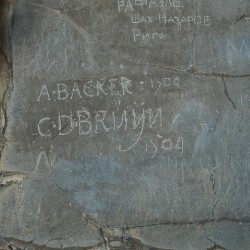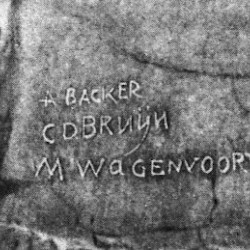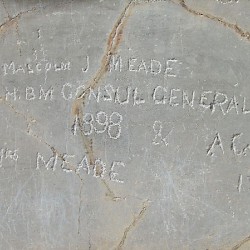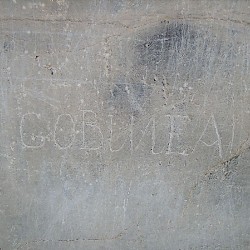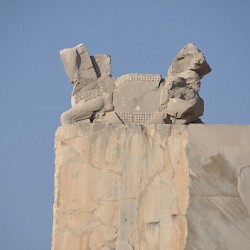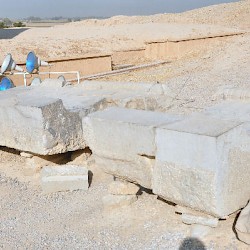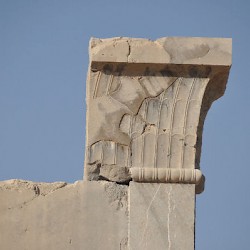Persepolis, Gate of All Nations
Q5527015Persepolis (Old Persian Pârsa, modern Takht-e Jamshid): Greek name of one of the capitals of the ancient Achaemenid Empire, founded by king Darius the Great (r.522-486 BCE). There were several satellite sites, Naqš-e Rustam and Takht-e Rustam.
Gate of All Nations
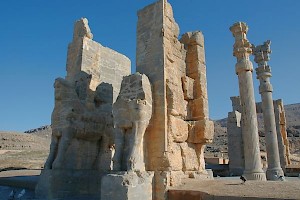
The construction of the Stairs of All Nations and the Gate of All Nations was ordered by the Achaemenid king Xerxes (r.486-465), the son and successor of the founder of Persepolis, Darius I the Great. Originally, the main access had been in the south; now, visitors would have to ascend the terrace from the west.
Like Gate R in Pasargadae, the entrance of the Gate of All Nations was protected by bulls (front) and mythological creatures, called lamasssus, bulls with the head of a bearded man. These bull-men originated in Babylonia and Assyria, but the Persians had adopted them. The general idea behind these fantasy animals is that they warded off evil, which explains why they were standing at a gate.
The entire monument was a giant construction with two large doors in the west and east and a hall between them. The columns of the central halls were 16½ meters high. The capitals had the form of a double bull. A third entrance was to the south. From here, visitors could proceed to the throne hall or Apadana.
In the mid-fourth century, the main exit was no longer to the Apadana but to the Hall of Hundred Columns; when the palaces were sacked by Alexander the Great, Persian artisans were building the Army Road that was to connect these two buildings.
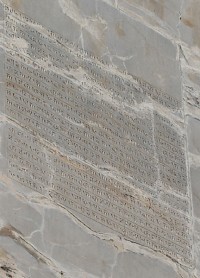
From an ancient inscription in the gate, known as XPa, we learn that the name of this monument was "Gate of All Nations". The text is trilingual: to the left and right of the Old Persian inscription are Babylonian and Elamite translations.
A great god is Ahuramazda, who created this earth, who created heaven, who created man, who created happiness for man, who made Xerxes king, one king of many kings, commander of many commanders.
I am Xerxes, the great king, the king of kings, the king of all countries and many men, the king in this great earth far and wide, the son of Darius, an Achaemenid.
King Xerxes says: by the favor of Ahuramazda this Gate of All Nations I built. Much else that is beautiful was built in this Persepolis (Pârsâ), which I built and my father built. Whatever has been built and seems beautiful - all that we built by the favor of Ahuramazda.
King Xerxes says: may Ahuramazda preserve me, my kingdom, what has been built by me, and what has been built by my father. That, indeed, may Ahuramazda preserve.
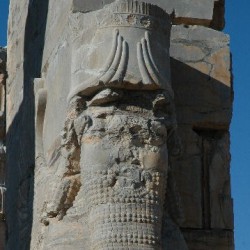 Persepolis, Gate of All Nations, Lamassu |
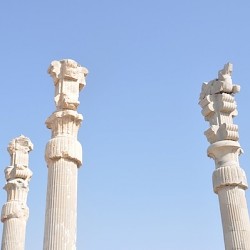 Persepolis, Gate of All Nations, Columns |
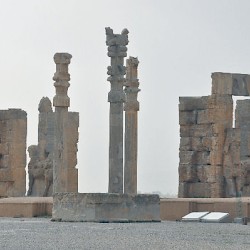 Persepolis, Gate of All Nations, seen from the Apadana |
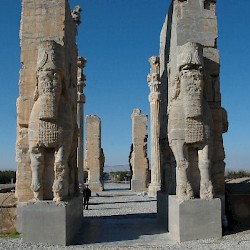 Gate of All Nations, eastern entrance |
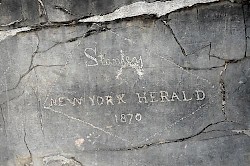
The first westerner to visit Persepolis and make accurate drawings was the Dutch artist Cornelis de Bruijn in the winter of 1704. He inscribed his name in the Gate. Later travelers did the same, but not all of them had the energy to work a day or two. At the beginning of the twentieth century, another Dutchman, Maurits Wagenvoort, left a careless graffito and made a photo to prove that he had traveled in the footsteps of De Bruijn. His name is hardly recognizable, so he "improved" the photo when he published his account.
Many others left their signatures on the walls of the gate, like the American journalist Henry M. Stanley, the British consul Malcolm Meade, and the notorious French racist Arthur de Gobineau.
